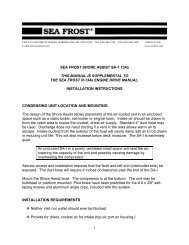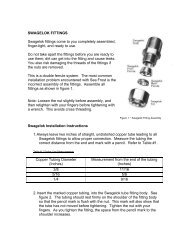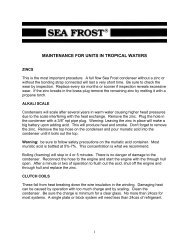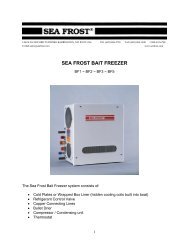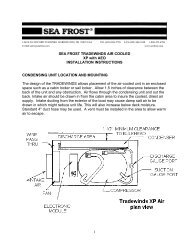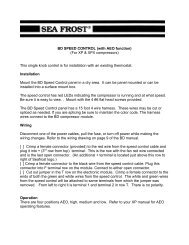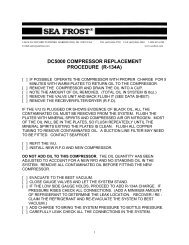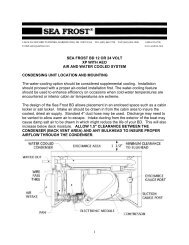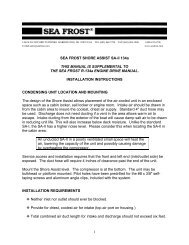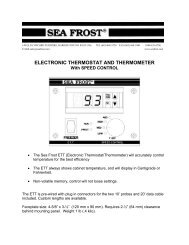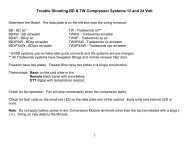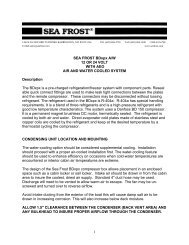SA 3 134a - Sea Frost Refrigeration
SA 3 134a - Sea Frost Refrigeration
SA 3 134a - Sea Frost Refrigeration
Create successful ePaper yourself
Turn your PDF publications into a flip-book with our unique Google optimized e-Paper software.
R-<strong>134a</strong> SERVICE PORT ACCESS FITTINGSThe R-<strong>134a</strong> service port access fittings on the gauge hose ends are quick connectfittings with a specially designed valve that opens the hose end valve while opening thesystem service port valve.CONNECTING GAUGESTo connect these fittings to the system service port remove the protective sealing capson the service ports. See Access to the System. Note that the ports are of differentsizes. The larger diameter port is the discharge side and the smaller port is the suctionside. Pull back the collar on the access fitting valve and push it over the appropriatesystem access port. Turn the access fitting valve clockwise to open the valves. Whenyou see the manifold gauge pressure change you have access to the system.Continuing to turn the access fitting valve clockwise may damage the service port.When you see the manifold gauge pressure change you have access to the system.Continuing to turn the access-fitting valve clockwise may damage the service port.During the service operation these valves are left open. Control of refrigerant andvacuum is by the manifold hand wheels.VENTING THE GAUGE SET ~ TO ATTACH TO A CHARGED SYSTEMIf the gauge set is not fitted with sealing valves or has not been purged with refrigerant,vent the hoses for a few seconds by slacking the connections at the manifold body afterconnecting to a charged system. This will prevent air from entering the system throughthe suction port.DISCONNECTING GAUGESTo disconnecting the gauge set after running the system, turn off the dischargeservice port access fitting first. Disconnect the discharge service valve and re-cap theport on the service port block. With the center port on the gauge set turned off at therefrigerant supply both hand wheels on the gauge set may be opened and thecompressor operated to extract the refrigerant from the gauges. When the pressure inboth gauges drops to the low side operating pressure turn off the gauge valves and thesuction service valve. Turn off the compressor. Remove the suction service valve andre-cap the service port. (This procedure will remove excess refrigerant from the gaugespreventing an excessive discharge of refrigerant on the next job.)19



